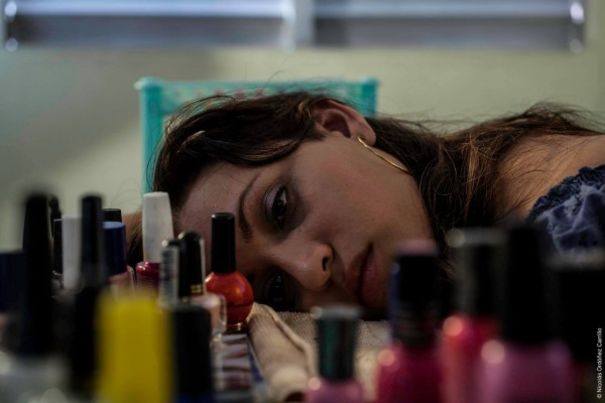Venecia, los miedos que reflejan los espejos (Venice, the fears the mirrors reflect)
by Mayté Madruga Hernández

In his poem, La isla en peso (The Island in Weight), the Cuban writer Virgilio Piñeira said that the cursed circumstances of having water everywhere forced him to sit on the coffee table. For Violeta, Mayelin and Monica, the poet's phrase forces them to sit at the dinner table and after that in a discotheque and tell each other the truths that not even they themselves want to hear. With these three characters Enrique Alvarez begins Venice, his most recent film. Mirrors project images that we do not always want to see, because beyond them is what we do not talk about. Alvarez and Nicolas Ordóñez, directors of photography, develop shots in front of mirrors, visually enriching a script whose first attempted objective is to zoom in on an apparently linear history. Claudia Muñiz, actress and the film’s screenwriter, develops a story line based on unfulfilled desires, while Ordóñez’ camera philosophizes on female appearances and stereotypes. Thus proceeds the film’s narration, focused on the performance of the three protagonists who progressively reveal their conflicts, in everything from gestures to the bluntest of words. The film does not follow a classical structure of beginning, turning point and outcome. It is an audiovisual text that displays conflicts throughout that are not resolved at its end. The actresses, who sustain the progress of the story line, carry on natural and simple dialogs, devoid of theatricality. In this film, the perception of loneliness and isolation is shown from a new generation that feels disappointment and boredom as daily components, where dreams sometimes come without great aspirations of fulfilling them. Through a variety of close-ups, Venice iconographically addresses the elements assigned to the construction of femininity: for example, the high heel, as a distinctive symbol of how being a woman is culturally understood. Ada, a transvestite interpreted by Jazz Vila, takes on this meaning, reminding us also of the prejudice it entails. She becomes the model that the main characters follow, as she is the only one who has chosen to present herself as she wants to be and not as she is expected to be. Lying is used in the film as an evasive resource; friends lying to each other is not as serious as lying to themselves. The mistrust in these characters is not based on previous actions, but on the lack of credibility among them. The intimate is both an aesthetic of the film, and a reason for conflict in the main actresses, who do not find freedom in the expression of their true realities. Violet’s, Monica’s and Mayelin’s fears and aspirations are revealed as they live a day in their lives. Dreams know no limits or containments, nor do fears, so Venice is the place where mirrors will not engender fear because they will reflect personal fulfilment.

